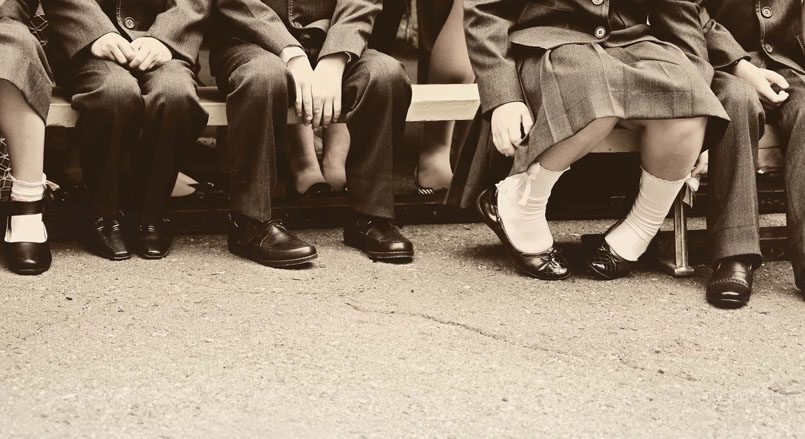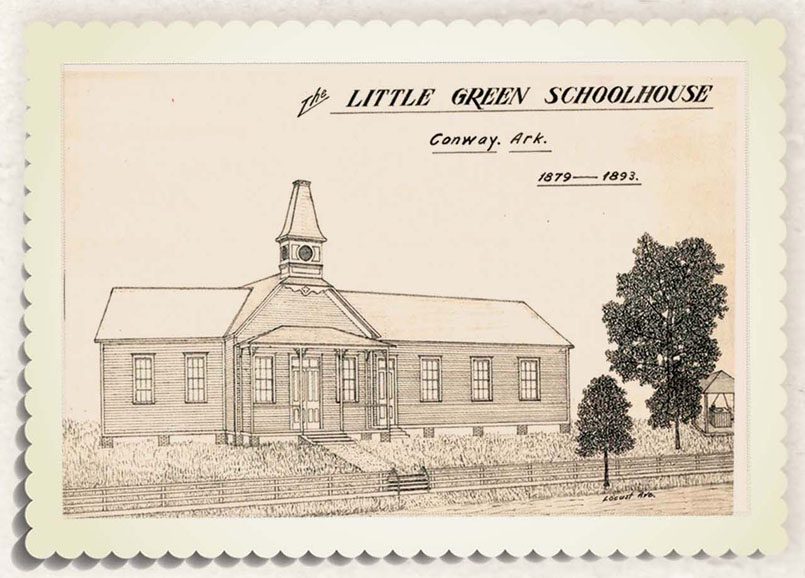31 Jul 2021 Robinson’s legacy of learning
By Vivian Hogue
Our city’s schools have long reflected America’s cultural changes. When I first began my teaching career, one of the most accurate statements I heard was that in general, schools are microcosms (miniatures) of their cities. If you could spend a day being the proverbial “fly on the wall,” you could see this is true. It has always been true everywhere.
The most standardized change in American public education was toward the one-room schoolhouse of the 1800s. During our city’s existence, our own local schools have grown from a single one-room schoolhouse to 16 public schools, two private schools, and homeschooling. Homeschooling existed centuries before the current homeschooling system, which has returned rapidly since the 1980s due to various needs or situations.

Conway’s school from 1879 to 1893 was one designed by Conway founder Asa Peter Robinson, who also donated the land. It was located on the west side of the north end of Locust Avenue and locally called the “Little Green School.” It was much like hundreds across the nation, as well as in Europe, with many located in undeveloped rural areas where children really did walk miles to school and back home in several inches or feet of snow! Some had the luxury of horses to ride; a few were accompanied by hired hands or family members. Their grades were generally first through eighth grade, although some had advanced learning.
My mother and dad taught school in structures such as these, as did an aunt who collaborated with a friend on a book on the subject. My aunt had taught in her small-community school for several decades. The book stated that rural children had chores to do before and after school, the hours of which were 8 a.m. to 4 p.m. Depending on the child’s age and the weather, chores included carrying wood, milking cows, feeding animals, and collecting eggs. Their often-barefoot walks to school were hampered by fear of snakes, poison ivy, rabid dogs, ticks, chiggers, fleas, and aggressive animals. Some streams were crossed, although swift and deep at times.
Lunches were carried in lard buckets with tight lids and a handle, and might hold baked potatoes, biscuits with eggs and meat, cookies, and other homemade delights. Free of preservatives, dyes, excess sugar, and MSG, foods provided proper alertness for learning reading, spelling, penmanship, history, arithmetic, English, and geography. Many readers read classical literature – even Shakespeare – at an early age. McGuffey Readers containing stories based on moral precepts from the Bible were used from first through sixth grades. My mother also taught Latin to higher grades. I still possess her school handbell which she rang outside in the mornings to announce it was “time to take up books” or to signal that recess was over.
My own first teaching experience was in 1966 at our local St. Joseph Elementary School. In retrospect, I realize that my classroom and students were much like those I have described of the one-room schoolhouse era. I was not of the Catholic faith but found myself learning about the children’s religious and home customs. Mass was at 7:30 and the bus had them there on time. I learned that several of my students had done farm chores before they left for school.

My unusual situation was that the school was short on teachers, and I was “recruited” to teach a class of which half were second-graders and half were third. I had no idea how I would handle two grades in one classroom, but I realized that I could teach the third-graders a subject, then the second-graders, then give the younger ones desk work with which the older ones could help.
They were well-behaved, teachable, huggable, and wanted to keep their classroom clean. Many brought their lunches and they were put on a shelf in the “cloakroom.” I remember stepping into that cubby hole once to comfort a third-grader whose dad had been deployed to Vietnam. The “aroma” of bologna and peanut butter was overwhelming, but after hot tears from both of us, we smoothed things out.
They laughed at me when I chided them for throwing dirt in each other’s faces during lunch and recess, only to learn it was Ash Wednesday and the priest had applied ashes to their foreheads. They also forgave me when I told them Jesus might be offended if He saw the weeds someone put behind His wall crucifix – only to find it was an approved sprig of palm leaf for Palm Sunday. That was 55 years ago, and I still remember every name, face, personality, and their supportive parents.
I recall many years ago when I went to a district-wide teachers’ meeting and found myself looking at one of those “children” who had grown up, finished college and become a teacher herself. At least one of the “boys” owns his own business and many of their classmates have worthwhile careers. One of the perks of educating our youth is seeing what they do with their gained knowledge. Along with that, I always considered common sense to be of equal necessity, maybe even more so.
My high school students may remember a large banner above my desk that said, “Whatever is in your heart comes out of your mouth.” That includes kind words and actions and knowing when to speak and keep quiet. Education includes many facets of learning, and most teachers hope they covered them by the last day of the school year. In time, they often receive sincere letters or notes indicating they succeeded. I still have those I received. No expensive stationery. In fact, one of my favorites was written on toilet tissue. However, the grammar was correct; the sentiment came from their heart; and common sense led them to express their thoughts. What a lasting and gratifying perk!
- And that’s what Christmas is really all about - December 2, 2025
- Giving thanks - November 4, 2025
- Giving up was not an option - September 30, 2025








